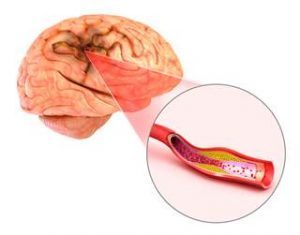- Home
- Editorial
- News
- Practice Guidelines
- Anesthesiology Guidelines
- Cancer Guidelines
- Cardiac Sciences Guidelines
- Critical Care Guidelines
- Dentistry Guidelines
- Dermatology Guidelines
- Diabetes and Endo Guidelines
- Diagnostics Guidelines
- ENT Guidelines
- Featured Practice Guidelines
- Gastroenterology Guidelines
- Geriatrics Guidelines
- Medicine Guidelines
- Nephrology Guidelines
- Neurosciences Guidelines
- Obs and Gynae Guidelines
- Ophthalmology Guidelines
- Orthopaedics Guidelines
- Paediatrics Guidelines
- Psychiatry Guidelines
- Pulmonology Guidelines
- Radiology Guidelines
- Surgery Guidelines
- Urology Guidelines
Certain Stroke patients benefit with thrombolysis beyond 5 hours window period

Which stroke patients may benefit from thrombolysis beyond standard 4.5-hour time window is a million dollar question. According to findings of EXTEND trial, the presence of ischemic penumbra means that thrombolysis with alteplase may prove beneficial up to 9 hours after stroke onset. Automated penumbral imaging may detect the presence of ischemic penumbra and help identify patients who will benefit from delayed thrombolysis. The findings of the trial have appeared in The Journal Neurology.
Current guidelines for thrombolysis in acute ischemic stroke recommend it is used only in patients who present within 4-5 hours of stroke onset.
According to a presentation made by Henry Ma, MD, of Monash University in Melbourne, Australia, at the 2019 International Stroke Conference, using advanced imaging to identify patients with ischemic penumbra may help detect those who would benefit from thrombolysis beyond the standard 4.5-hour time window.
Advanced imaging to identify ischemic penumbra in stroke patients may help to rescue the penumbra at an early stage, leading to better clinical outcomes, suggested a report from an EXTEND trial.
Within the ischemic cerebrovascular bed, there are two major zones of injury: the core ischemic zone and the “ischemic penumbra” (the term generally used to define ischemic but still viable cerebral tissue). An ischemic penumbra is a portion of the ischemic territory that is still potentially salvageable if appropriate treatment is given. Currently, the most common challenge faced by surgeons is, how can this ischemic region be most accurately.
The researchers conducted a multicenter, randomized, double-blind, placebo-controlled EXTEND trial, to evaluate the use of alteplase 0.9 mg/kg among patients who presented with ischemic stroke within 4.5 to 9 hours from stroke onset or those with wake-up stroke, meaning they awoke in the morning with symptoms of stroke.
It was the first trial to demonstrate the benefits of thrombolysis therapy in an extended time window using automated penumbral imaging
The selection of the patient was based on automated perfusion imaging software showing salvageable brain tissue (CT perfusion or MR diffusion/perfusion). The primary endpoint of the trial was an excellent functional outcome, defined as a modified Rankin Score (mRS) of 0 to 1 at 3 months.
Based on an intent-to-treat analysis, patients who received alteplase were more likely to achieve an excellent functional outcome at 3 months. They were also more likely to achieve a good functional outcome, defined as an mRS 0 to 2 at 3 months as well as increased early reperfusion and clinical improvement at 24 hours.
Mortality was similar in both groups, but there was a trend toward an increased risk of symptomatic intracranial haemorrhage with alteplase.
The Trial demonstrated the benefits of thrombolysis therapy up to 9 hours after stroke onset in an extended time window using automated penumbral imaging.

Disclaimer: This site is primarily intended for healthcare professionals. Any content/information on this website does not replace the advice of medical and/or health professionals and should not be construed as medical/diagnostic advice/endorsement or prescription. Use of this site is subject to our terms of use, privacy policy, advertisement policy. © 2020 Minerva Medical Treatment Pvt Ltd